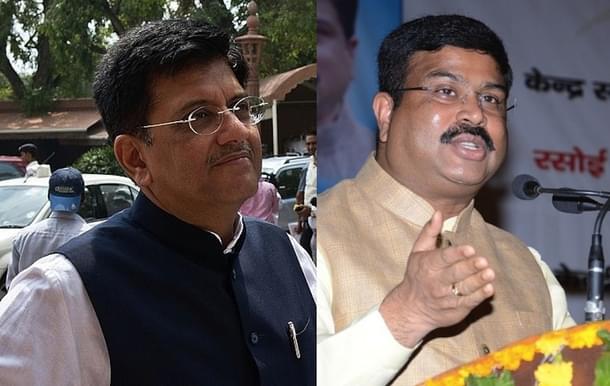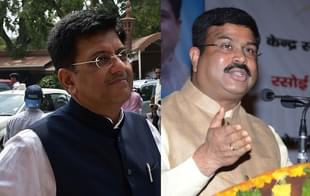Politics
The Kerosene Subsidy Reform Plan May Well Be The Modi Govt’s Best Effort Yet
R Jagannathan
Oct 13, 2016, 01:31 PM | Updated 01:31 PM IST
Save & read from anywhere!
Bookmark stories for easy access on any device or the Swarajya app.


If one needed a case study on what a government with a clear vision and coordinated action plan can deliver, one need not look any further than the way the oil subsidy reform plan has been executed.
It has been aided, no doubt, by a period of weak global oil prices, but the Modi government’s successful strategy is not the result of pure luck. It has coherent political and economic thinking behind it, and coordinated teamwork by at least two ministries.
The four elements of the subsidy reform plan have been the following: deregulation of diesel, the product that effectively ruined the UPA’s fiscal deficits (done in October 2014); the return of market-based pricing in LPG based on direct cash transfers and elimination of ineligible recipients (done from April 2015), voluntary giving up of subsidies by the rich (ongoing, with over 10 million LPG users paying the full market price); and a multi-pronged approach to eliminate the kerosene subsidy without actually nicking the poor where it hurts most.
Kerosene is the fuel allegedly used by the poor; it is also the petro-product with the highest levels of misdirected subsidy – with large portions of it going to adulterate diesel. Given the huge systemic stakes in keeping kerosene subsidies as they are, it is truly an achievement when The Economic Times reports (13 October) that the kerosene subsidy is due to fall by 25 percent this year. This is not due to any global price windfall, for global prices this fiscal are not any lower than what they were last year.
How is this miracle – in the subsidy most resistant to reform – being achieved? It is worth noting that kerosene subsidies, despite a secular trend of declining usage since 2007-08, have been rising continuously since 2009-10 (Rs 17,364 crore) till the last year of the UPA (2013-14, when it touched Rs 30,574 crore), before falling due to global price collapse.
The simple fact is that the kerosene subsidy bill has been rising despite a fall in kerosene consumption from 9.4 million tonnes in 2007-08 to just 6.8 million tonnes in 2015-16.
Not all credit should go to global prices. This is where the Modi government’s coordinated efforts to eliminate kerosene subsidies without actually hurting the poor has worked wonders. It has involved a coordinated effort between the petroleum and power ministries. The former is led by an unlikely reformer, Petroleum Minister Dharmendra Pradhan, who has begun gently raising kerosene prices (25 paise a month) and extending the LPG coverage area, and the latter by Piyush Goyal, the Power Minister, who has been extending electricity to many more rural areas, and gifting the poor with low-cost LED bulbs which consume less power.
In many remote areas, kerosene is not just a cooking fuel, but also used for lighting.
The strategy is thus clear: in stage one, kerosene subsidies will be partly shifted to LPG, where beneficiaries are clearly identified and paid out cash. In stage two, aided by the long-term decline in kerosene consumption, kerosene usage will be steadily reduced, including through the gentle push in prices.
In other words, the kerosene subsidy is gradually being subsumed in the LPG subsidy, where misuse is eliminated.
This still leaves the question of LPG subsidies intact, even if paid out in cash (Rs 36,600 paid out so far). But reduction in LPG subsidies will probably play out like this: a shift to fixed cash subsidies on the 12 cylinders now given to those eligible, which means prices will gyrate based on global prices, but the subsidy outgo will be constant, or rising slowly. At some point, subsidised cylinders per family may well be cut to nine per household. If global prices rise all of a sudden, the government can afford to raise subsidies by giving up some of its own ad hoc levies on petrol and diesel. So Finance Minister Arun Jaitley could come to the aid of the Pradhan-Goyal party, if there is a need to keep prices down for political reasons.
This slow and steady approach to reform makes more sense than trying to rush through disruptive changes with big bang stuff. The speed of reform always matters less than its direction, and the Modi government’s coordinated efforts at oil subsidy reform is a perfect example of sustained and sensible reform coordinated from the top and executed to perfection by his ministers.
Jagannathan is former Editorial Director, Swarajya. He tweets at @TheJaggi.





